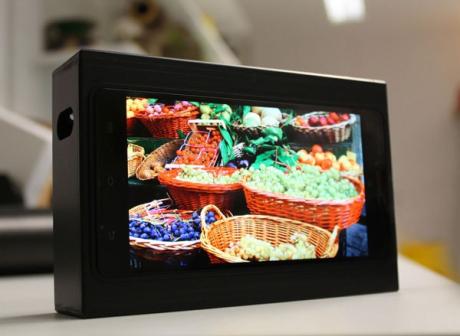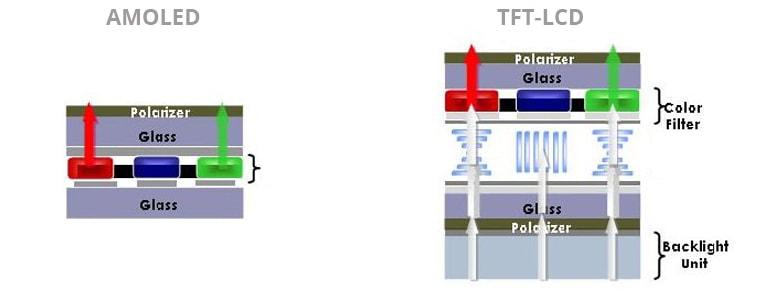Back in July, we discussed AMOLED as an increasingly viable option for industrial displays, as we are now able to offer displays based on this technology at much more realistic MoQs.
We now consider how to decide whether the new kid on the block - AMOLED - is a good choice for your project, or if you’re better off staying with tried and trusted TFT. In the first of this series of blogs, we will look at the advantages of AMOLED, moving on to the benefits of TFT, finally rounding off the series with the rise of the OLED, particularly talking about PMOLED. As it represents an evolutionary step in display technology, it surely follows that AMOLED offers gains in terms of the performance metrics mentioned, and of course it does.

What are the advantages of AMOLED over TFT?
The AMOLED display offers a wider viewing angle than TFT LCD displays, yet is significantly thinner in profile (see below for an overview of the construction of AMOLED technology). Their construction also allows more of the light to reach the top layer (normally glass) and so they are generally perceived as being brighter, too. For example, manufacturer’s data shows that for a luminance of 150cd/m2, AMOLEDs can appear almost 50% brighter than TFT-LCDs – pretty impressive!
In practice, this means that a TFT LCD display would need to use more power to achieve the same brightness as an AMOLED display, particularly in sunlight. Conversely, the AMOLED display could operate at lower power and still be readable in direct sunlight.
For industrial and medical applications, operating temperature can be critical. AMOLEDs compare favourably with even the best TFTs, making them suitable for environments that would be considered harsh in terms of consumer applications, but standard in industrial, medical and automotive markets.

These benefits ensure that AMOLED displays will successfully transition from the very high volume consumer market, predominantly smart phones, to medium and high volume applications commonly found in all other sectors.
By way of illustration, Truly Semiconductors is one of China’s largest manufacturers of small and medium sized display modules, producing both AMOLED and TFT displays. Its own data shows that AMOLED offers superior performance in terms of contrast ratio and response times.
This alone would make preferable in many applications, but the benefits extend to include lower dynamic power, further widening the potential applications to include portable equipment, such as home health care (another burgeoning sector), and the Industrial IoT.
AMOLED technology offers much higher response rates than TFT LCD. High response times directly influence the update rate; for a frame rate of 60 frames per second (60Hz), a minimum response time of 16ms would be required. It follows that a higher response rate results in a clearer image. This can be particularly important in industrial or medical applications, where the clarity of the image could be crucial.
So in terms of performance, the scales are weighted in favour of AMOLED. But there remain some compelling reasons to consider TFT too, as we will see in our second post.


